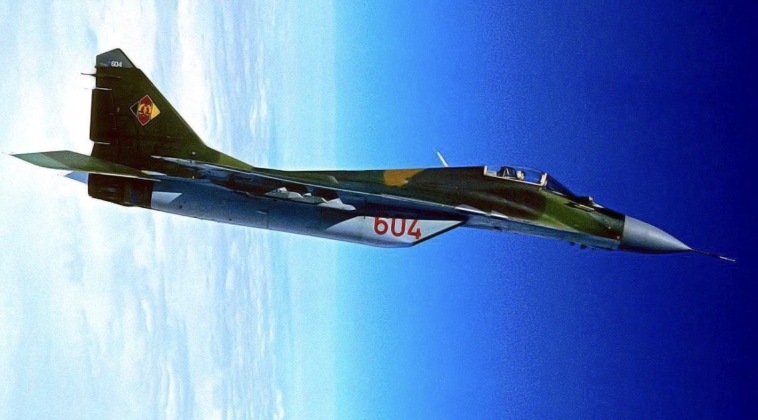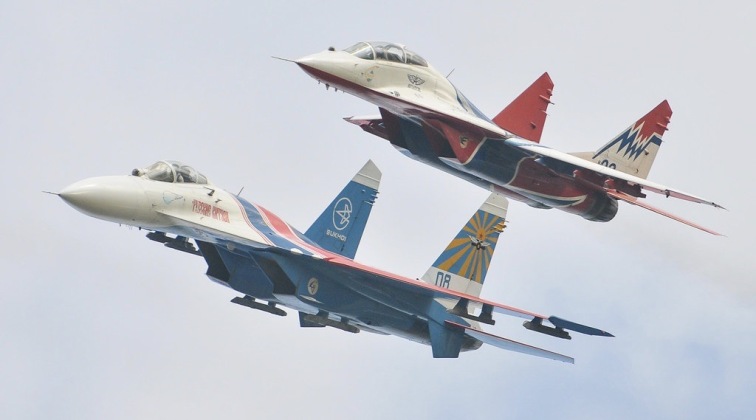News
MiG-29 Fighter Marks 40 Years in Service: How Russia’s Extremely Manoeuvrable Fighter Has Evolved
July 2022 marks 40 years since the Soviet MiG-29 Fulcrum entered service in the Soviet Air Forces, with the aircraft being the oldest outside the United States that is still in production today and one that still serves in the fleets of two dozen countries. The MiG-29 was one of four Soviet fourth generation combat aircraft to enter service, following the Su-24M dedicated strike fighter which became operational in 1979 and the MiG-31 Foxhound interceptor in 1981, but preceding the Su-27 Flanker which entered service later in 1985. The fighter was developed in parallel with the Su-27 to provide complementary medium and heavyweight aircraft, with the MiG-29 intended to be deployed closer to the frontlines, be produced in larger numbers, and be exported more widely. The Su-27 meanwhile, with its superior performance, much higher endurance, and much greater production and operational costs, was to serve primarily in the Soviet Air Forces as an elite fighter. The collapse of the Soviet Union and sharp contraction of the Russian Air Force led to a halt in Russian MiG-29 acquisitions and the closing of most of its productive capacity for the fighters, which were subsequently manufactured almost exclusively for export.

The large majority of MiG-29s were produced during the 1980s, when the Soviet Air Force alone fielding approximately 800 by the time the state disintegrated – more than all fighter types combined in the Russian Air Force today. The fighter’s first foreign operator was the Indian Air Force, although the USSR also widely exported the aircraft within the Warsaw Pact as well as to North Korea, Yugoslavia, Cuba, Syria, Iran and Iraq. When acquired by NATO through East Germany, which had been a Warsaw Pact member but saw its assets acquired by the unified German state, the MiG-29 was extensively tested and proved to have significant advantages over its Western competitors the F-16 and F-18, and at short ranges an edge over even the more capable heavyweight F-15. The fighter’s manoeuvrability was unrivalled for its time, and those in East German service used R-73 missiles paired with helmet mounted sights to be able to engage targets at very extreme angles – a feature pioneered by the USSR which NATO members quickly developed for their aircraft after observing it on the MiG-29. The MiG-29 saw combat in the 1990s most notably over Iraq, where the fighter neutralised a British Tornado fighter and was conspicuously avoided by its American analogue the F-16s. With Iraqi variants lacking the R-73 missile, however, they struggled to counter U.S. Air Force F-15s. The fighters also saw combat over East Africa where four Eritrean Air Force MiGs were shot down by Ethiopian Su-27s.

The MiG-29 has evolved considerably since the end of the Cold War, with funding from exports allowing the aircraft to be modernised considerably, albeit far slower than the USSR had done, with the latest variant the MiG-29M and its carrier based counterpart the MiG-29K being in production today. The MiG-29M has seen export to Egypt and Algeria, the former which was its first client and purchased a large batch of 46 aircraft in 2015 which provided a very major boost to the program. The MiG-29K was acquired by the navies of India and Russia. These two very similar aircraft boasted very different airframe designs from the original MiG-29, and had more powerful engines, entirely new avionics and sensors including electronically scanned array radars, and a much greater fuel capacity which compensated for what was widely seen to be the fighter’s primary weakness – its short range. The aircraft also gained multirole capabilities allowing them to better use precision guided weapons for strike and anti shipping roles. Other than the MiG-29M and K variants, MiG-29s exported have been Cold War era airframes of which Russia retained several hundred in storage many of them assembled. The fighters’ engines and avionics were in many cases, such as the MiG-29SMT and MiG-29UPG variants acquired by Syria and India, upgraded to the same standard as the MiG-29M while their fuel tanks were also expanded.

It remains highly uncertain how much longer the MiG-29 will remain in production, with this likely heavily depending on export demand and on whether its successor the Checkmate stealth fighter materialises. The sole production line for the fighters at the Sokol Aviation Plant also produces the MiG-35 fighter, which is closely based on and externally almost indistinguishable from the MiG-29M. The Russian Air Force has acquired half a dozen of the fighters, apparently primarily to increase clients’ confidence in the design, although like the MiG-29 after the Soviet collapse the MiG-35 program is being run almost exclusively for export. The Russian Air Force’s relative lack of interest in the MiG-29 is a result of a number of factors including an inability to invest in modernising multiple airframe designs, meaning for years the Su-27 and its derivatives were the only aircraft to receive meaningful improvements, as well as the perceived greater cost effectiveness of Su-27-derived aircraft which compensate for their higher production and operational costs with major performance advantages. The MiG-29’s shorter range and smaller sensor suite are also less well suited to protecting the airspace of Russia’s vast territory as the Su-27 has been. The MiG-29 is nevertheless a highly successful fighter, and one favoured by many countries with smaller land masses and by many larger ones as a complement to heavier classes such as the Su-27. The MiG-29’s improved performance as the MiG-29M and MiG-35 in particular ensure that it continues to represent a formidable aircraft which in the right hands has the potential to hold its own against any other fourth generation fighter.












